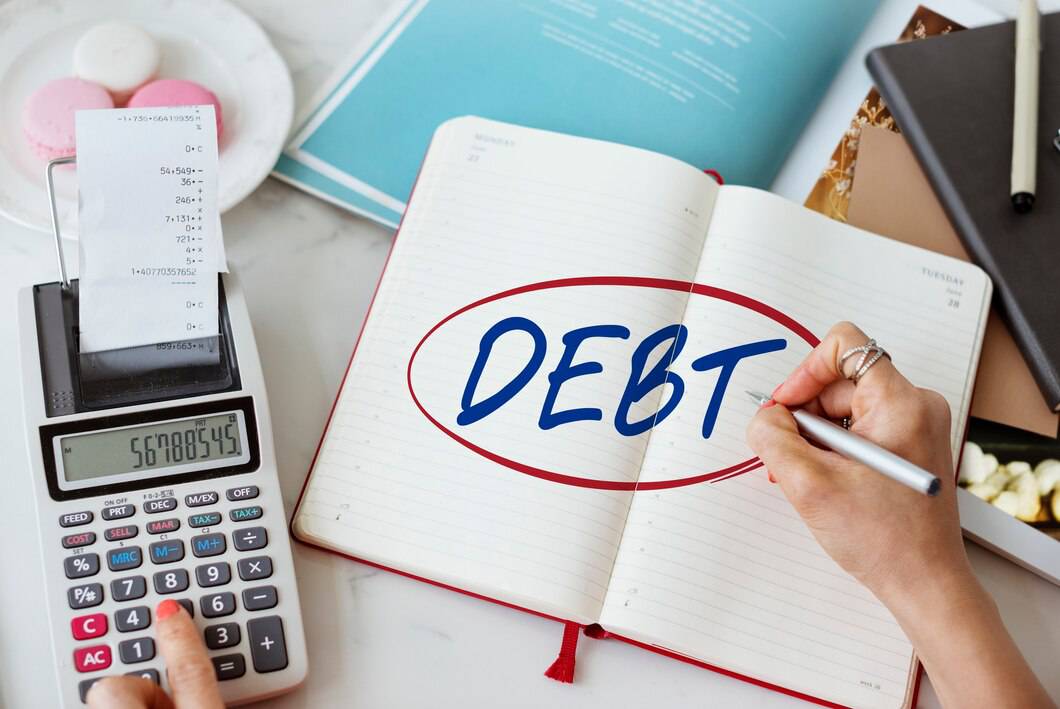
How to Get Out of Debt Fast: A Practical Step-by-Step Guide
Debt can feel like a heavy anchor, dragging down your financial freedom. But fear not! With determination and the right game plan, you can reclaim your cash flow and enter the sunlight of a debt-free life. In this guide, we’ll share strong debt repayment strategies. We’ll help you create a plan to escape your obligations. Plus, we’ll add tips for a debt-free lifestyle to speed up your journey. This step-by-step guide is for everyone in the UK. It helps students on a budget, young professionals starting, and experienced money managers. We’re here to arm you with the tools to clean your slate—fast and sustainably.
Understanding Your Debt

First, know your finances before starting to get out of debt fast. Understanding the types and amounts of your debt is key to a good repayment plan.
Types of Debt
Debt can come in various forms, such as:
- Credit Card Debt: These loans have high interest rates. If not managed well, they can quickly become unmanageable.
- Student Loans: They’re often seen as “good debt.” Still, it’s important to have a solid plan to get out of debt if payments become too heavy.
- Personal Loans: Borrowed funds that might have fixed interest rates and repayment terms.
- Mortgage Debt: Over-leveraged on your home can limit your financial freedom, even though mortgages are usually long-term.
The Impact of Debt
Understanding how debt affects your life is crucial:
- Financial Stress: Debt can lead to anxiety and impact your overall well-being.
- Limited Savings: High monthly repayments mean less money is available for savings and investments.
- Credit Score Damage: Missed or late payments can lower your credit score, making future borrowing more expensive.
Understanding your debt’s full impact helps you see why strong repayment strategies are key to a successful debt relief plan.
Step 1: Assess Your Financial Situation

The first step to eliminating debt is gaining a complete picture of your finances.
1. List All Your Debts
Create a detailed list of all your outstanding debts. Include:
- The creditor’s name.
- The total amount owed.
- Interest rates.
- Minimum monthly payments.
- Repayment terms.
2. Evaluate Your Income and Expenses
Understanding your cash flow is critical. Keep track of your monthly income. List all expenses. Include essential costs like rent, utilities, and groceries. Don’t forget discretionary spending too. This analysis will reveal how much extra money you have for debt repayment.
3. Calculate Your Debt-to-Income Ratio
This ratio helps you understand your financial health. A high debt-to-income ratio shows that much of your income pays off debt. This means you need to take action quickly.
Step 2: Create a Realistic Budget

A well-structured budget is the cornerstone of any successful get-out-of-debt plan.
1. Track Your Spending
Use budgeting apps or spreadsheets to record your expenses over a month. Identify areas where you can cut back without compromising your quality of life.
2. Prioritise Essential Expenses
Differentiate between needs and wants. Focus on essential expenses first, then allocate any surplus toward debt repayment. This disciplined approach is one of the most effective debt repayment strategies available.
3. Set Savings Goals
Even while repaying debt, it’s important to save for emergencies. A small emergency fund can prevent additional debt if unexpected expenses arise.
Creating a realistic budget supports your get-out-of-debt plan and builds a foundation for long-term financial health and debt-free lifestyle tips.
Step 3: Prioritise Your Debts
With a clear understanding of your financial situation and a budget in place, the next step is to prioritise which debts to tackle first.
1. The Debt Avalanche vs. Debt Snowball Methods
There are two popular approaches:
- Debt Avalanche: First, focus on repaying the debt with the highest interest rate. This method minimises the total interest paid over time.
- Debt Snowball: Concentrate on paying off the smallest debts first, gaining quick wins and building momentum.
Both methods are effective debt repayment strategies; choose the one that aligns with your financial psychology and motivates you to stick with your get-out-of-debt plan.
2. Consolidate Your Debts
If you have multiple high-interest debts, consider consolidating them into a single loan with a lower interest rate. This can simplify your payments and potentially lower your monthly burden.
Effective prioritisation ensures that every pound you allocate reduces your overall debt burden, reinforcing your get-out-of-debt plan and long-term debt repayment strategies.
Step 4: Explore Debt Repayment Strategies
Now that you’ve prioritised your debts, it’s time to implement specific repayment strategies to accelerate your journey to being debt-free.
1. Increase Your Monthly Repayments
Even small increases in your monthly repayments can make a big difference over time.
- Cut Back on Expenses: Use your budgeting insights to reduce discretionary spending.
- Boost Your Income: Consider side gigs or freelance opportunities to supplement your income and channel extra funds towards debt repayment.
2. Negotiate with Creditors
Reach out to your creditors to discuss:
- Lower interest rates.
- Revised repayment terms.
- Temporary hardship programs.
Negotiating can significantly reduce your financial burden and accelerate your get out of debt plan.
3. Consider Professional Help
Consult a financial advisor or counsellor if managing your debt feels overwhelming. They can offer personalised debt repayment strategies and help tailor a get-out-of-debt plan that suits your circumstances.
Implementing these repayment strategies is essential for eliminating debt quickly and efficiently, setting you toward a debt-free future.
Step 5: Boost Your Income and Reduce Expenses
Accelerating debt repayment often requires both cutting costs and increasing income.
1. Reduce Unnecessary Expenses
Revisit your budget regularly to identify recurring expenses that can be reduced or eliminated. This might include:
- Subscriptions you no longer use.
- Dining out less frequently.
- Shopping smarter for essentials.
2. Increase Your Income
Explore opportunities to earn additional income:
- Part-Time Work or Freelancing: Leverage your skills to take on side projects.
- Selling Unwanted Items: Declutter and sell items you no longer need.
- Passive Income Streams: Consider options that require an initial investment but provide ongoing returns.
By reducing expenses and boosting income, you can allocate more funds to your debt repayment efforts, reinforcing your debt repayment strategies and accelerating your get-out-of-debt plan.
Step 6: Maintain a Debt-Free Lifestyle
Achieving debt freedom is a significant milestone, but maintaining it requires a shift in mindset and habits. Here are some debt-free lifestyle tips to help you stay on track once you’re out of debt.
1. Continue Budgeting and Monitoring
Use your budget to manage your finances even after your debts are cleared. Monitoring your income and expenses ensures you don’t fall back into old habits.
2. Build a Robust Emergency Fund
An emergency fund acts as a safety net, preventing you from falling back on debt when unexpected expenses occur.
3. Prioritise Saving and Investing
With no debt repayments eating into your monthly budget, channel those funds into savings and investments. This not only secures your future but also builds wealth over time.
4. Adopt a Mindful Spending Approach
Reflect on your journey to becoming debt-free and adopt spending habits that align with your long-term financial goals. Being mindful of your purchases and distinguishing between needs and wants are crucial components of a sustainable debt-free lifestyle.
These debt-free lifestyle tips help ensure that you maintain financial discipline even after you pay off your debts, setting the stage for lasting financial health.
Mindset and Motivation for Debt Freedom
Achieving financial freedom requires more than a solid get-out-of-debt plan; it demands the right mindset and ongoing motivation.
1. Set Clear, Achievable Goals
Break down your financial journey into small milestones. Celebrating each achievement, no matter how small, reinforces your progress and keeps you motivated.
2. Stay Positive and Resilient
Debt repayment can be a long and challenging process. Maintain a positive outlook and be resilient in the face of setbacks. Remember that every step you take brings you closer to financial freedom.
3. Seek Support
Surround yourself with a supportive network of friends, family, or online communities who share similar financial goals. Sharing experiences and tips can provide both encouragement and accountability.
A strong, positive mindset is integral to successfully executing your debt repayment strategies and staying committed to your get-out-of-debt plan.
Tools and Resources
Utilising the right tools can make your debt repayment journey smoother and more efficient. Consider these resources:
- Budgeting Apps: Tools like YNAB, Money Dashboard, or Mint can help you track expenses and manage your budget.
- Debt Repayment Calculators: These calculators can show you how long it will take to clear your debts based on different repayment strategies.
- Financial Planning Workshops: Attend seminars or online courses to learn more about effective debt management and financial planning.
- Debt Counselling Services: Professional advice can provide personalised guidance and help you refine your get-out-of-debt plan.
These tools and resources are essential for implementing effective debt repayment strategies and ensuring long-term financial success.
Get out of Debt
Getting out of debt fast is a challenging yet entirely achievable goal with the right approach. By following this practical, step-by-step guide, you can implement proven debt repayment strategies that work for your unique situation, create a realistic get-out-of-debt plan, and adopt debt-free lifestyle tips that will help you maintain financial freedom for years.
Once you’re out of debt, the habits you build—such as ongoing budgeting, saving, and mindful spending—will preserve your financial gains and position you for future wealth accumulation. Embrace the process, set clear goals, and celebrate each milestone as you move closer to a secure and prosperous financial future.
By integrating these strategies, maintaining a disciplined mindset, and utilising the right tools, you’ll be well on your way to transforming your financial life. Remember, every step to reducing debt is towards a more secure, empowered, and debt-free future.


